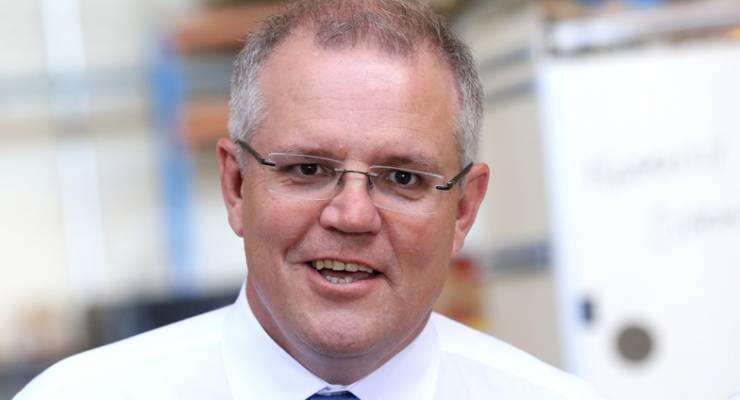
The Turnbull government and Australian business should be doing cartwheels about the December quarter national accounts, which showed a very sharp rebound back to growth of 1.1% from an unrevised 0.5% contraction in the three months to September. Growth over the year to December was 2.4% — much better than some forecasts at around 1.9% to 2.1%. Broad-based growth drove the much higher than expected quarterly and annual growth rates, with the Australian Bureau of Statistics pointing out that growth was recorded in 15 of the 20 industries it studies.
The result makes a mockery of the recession fearmongering that erupted three months ago in the wake of the September quarter result, and also discredits assertions, as recently as on the ABC’s News Breakfast this morning, that the economy was still too dependent on mining.
Households expenditure contributed 0.5 points to the result, and net exports contributed 0.2 points. The terms of trade grew by 9.1% in the quarter, thanks to coal and iron ore — they’re now 15.6% higher than in December quarter 2015. Nominal GDP grew by 3.0% to be 6.1% higher through the year, a big lift from the broader trend of recent years. And real net national disposable income (remember the “income recession”?) increased by 2.9% for the quarter.
Companies are doing well too: there was a 16.5% increase in private non-financial corporations’ gross operating surplus, but wages, as we know, were down: compensation of employees decreased 0.5% for the quarter to be just 1.5% higher through the year. And with the return to growth, productivity improved: gross value added per capita rose 0.6% after a 0.7% fall in the September quarter.
Higher profits, lower wages, higher productivity, strong growth — what more could business want? Oh, wait, unions are bad, penalty rates are crippling the economy, and taxpayers need to give our biggest companies a big tax cut.
Helping keep the economy growing, the solid 0.5 percentage point contribution from household consumption was financed by consumers running down their savings. The ABS said the savings rate dropped to 5.2% in the quarter, down a solid 1.2% from the September quarter. The ABS said this decline was driven by weak growth in household Gross disposable income of 0.2% while household spending lifted to 1.2% from subdued growth of 0.6% in the previous quarter.
The September quarter’s negative result remains unrevised at 0.5% but increasingly looks more like a one-off combination of factors amid a stronger period of growth across 2016 than 2015 — and is all the better for coming despite the decline in mining investment, which will shortly tail off. And growth is certainly strong enough that the government’s continued pumping of tens of billions of dollars a year into the budget deficit no longer looks necessary to support growth, especially with subdued inflation allowing the Reserve Bank to keep interest rates on hold.







Gee guys, all that broad based business growth, hell, growth in 15 out 20 industry sectors, and the employment outcome was…. ? not mentioned in your summary. Did any figures show the LNP’s lamentable continuing incapacity to create permanent jobs, and their great capacity to create casual jobs and make employment stats look decent to a casual glance?
The casualisation of our workplace, with barely any mainstream comment or substantial journalism to seriously question government inaction, is a national disgrace. Darwin help any young person working 3 jobs to pay off a mortgage, their rent,and basic living expenses.
If journalists accept the govt is serious about the puerile slogan ‘Jobs and Growth’, (Yes, a big If), then some work may be necessary to get them to account for the ‘Jobs’ side of it. Not in this article, and Keane is a good journo. What happened here?